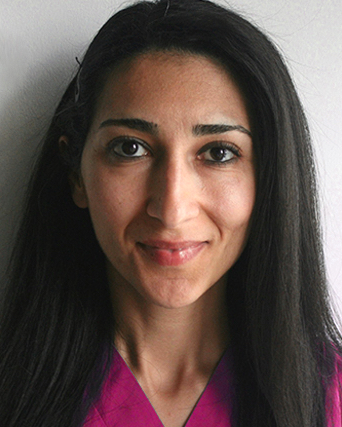Tooth extraction involves having one or more teeth completely removed from your mouth by a dentist. This can be done at one appointment or over a few sessions (if more than one tooth needs to be taken out). You may or may not want, or need to have the teeth replaced. Your dentist will explain all the options available to you.
There are a number of reasons why your teeth may need to be extracted. Some of the most common reasons include:
If you don’t want to have your tooth taken out, sometimes alternative treatments are available at Surbiton Surrey dentist.
Painkillers or antibiotics may ease any pain and swelling, but these will just relieve your symptoms in the short term and won’t get rid of the underlying problem.
If you have crooked teeth, it’s sometimes possible to have them corrected without extractions. An orthodontist (a dentist who specialises in straightening teeth) will be able to explain the treatment options available to you.
If an infected tooth is identified early enough, you may be able to have root canal treatment instead of having the whole tooth removed.
Your dentist will ask about your dental and medical history. It’s important that you mention any medical conditions, allergies or recent operations. You should also tell your dentist if you use an inhaler or are taking any medication, including the contraceptive pill or over-the-counter medicines such as aspirin. If you’re particularly anxious about having treatment, your dentist may give you a sedative – this relieves anxiety and causes temporary relaxation without putting you to sleep.
In certain situations, you may need to go into hospital and have treatment under general anaesthetic. This means you will be asleep and feel no pain while your tooth is being removed.
So that you don’t feel any pain during or immediately after the procedure, the Surbiton Smile dentist will give an injection of local anaesthetic into your mouth, which completely blocks feeling from the area. After the anaesthetic has taken effect, the dentist will widen the socket (the area your tooth sits in) using a tool called an elevator or a pair of special forceps and move the tooth from side to side until it is loose enough to be removed completely. During the procedure you will feel some pressure in your mouth and hear some noise. You should not feel any pain. In more difficult and rarer cases, your dentist may not be able to reach the root of your tooth, which in that case a small cut is made in your gum. If necessary for the Surbiton dentist then drill away some of the bone so the tooth root can be removed.
There will be some bleeding and your dentist may put in stitches. After the extraction, you will be given a piece of soft padding to bite on to stop the bleeding.
If you have had your tooth removed under local anaesthesia, you will need to stay at the dental surgery until the bleeding is controlled. This will probably take about 10 to 15 minutes. You may need pain relief to help with any discomfort as the anaesthetic wears off.
If you have had general anaesthesia or sedation, you will need to arrange for someone to drive you home. Try to have a friend or relative stay with you until the next day. Both sedation and general anaesthesia temporarily affect your co-ordination and reasoning skills, so you must not drive, drink alcohol, operate machinery or sign legal documents until your dentist tells you it’s safe. This will be at least until the next day. Wait until the local anaesthetic has worn off before having hot food or drinks – you might burn your mouth or chew the inside of your cheek while it’s still numb. Once you regain some feeling, stick to lukewarm, soft food and try not to chew in the part of your mouth where the tooth has been removed. Try not to drink alcohol or smoke for the first 24 hours after the extraction – this may cause further bleeding. It’s best not to rinse out your mouth or do any exercise for the first few hours after the extraction. This is because any blood clot that may have formed could be disturbed and the bleeding could start again. After the first few hours, it can be helpful to rinse out your mouth with salt water (half a teaspoon of salt in a glass of warm water) a few times a day.
It’s important to keep your mouth as clean as possible so continue brushing your teeth after the extraction. If you had stitches during the procedure, you may need to go back to your dentist to have them removed. Otherwise you probably won’t need a follow-up appointment. Smoking is not permitted for the first seven days after extraction, because smoking prevents the healing of the socket, which will be very painful and it will be costly to stop the pain.
You may have some discomfort and swelling for a few days afterwards, and your jaw may feel a little stiff. If you need pain relief, you can take over-the-counter painkillers such as paracetamol or ibuprofen. Always follow the instructions in the patient information leaflet that comes with any medicine and ask your pharmacist for advice. It’s normal for you to notice some slight bleeding for the first couple of days after having a tooth removed. Rinse the excess out of your mouth and then bite down on a clean pad of material such as a handkerchief. If the bleeding doesn’t stop within 15 to 30 minutes, contact your dentist for advice.
Tooth extraction at is common procedure and generally safe. However, in order to make an informed decision and give your consent, you need to be aware of the possible side effects and the risk of complications.
While such complications are not common, some people may develop some, after extraction of teeth. Usually, complications arise in patients with difficult root morphology or strong supporting tissues. Likewise, teeth with weak crown surfaces, with deep caries and brittle teeth may also cause complications during or after the extraction procedure. While some of the complications arise during the procedure itself, others develop after the procedure, sometimes, within a few days too. Contact your dentist immediately if you experience:
One of the most common problems that can occur after tooth extraction is called a dry socket. This is when there is no blood clot so the tooth socket doesn’t heal as quickly as expected. This usually happens within two to four days after the extraction and is extremely painful. Call your dentist who will rinse the area, put a dressing on it, may give you antibiotics and keep you under observation until the problem is resolved.
 Dr. Simin Soltani (Principal dentist)
DDS . MSC . Sweden
Dr. Simin Soltani (Principal dentist)
DDS . MSC . Sweden
 Dr Shima Mahdavi-Izadi
DDS, MClinDent MEndo, Specialist Endodontist
Dr Shima Mahdavi-Izadi
DDS, MClinDent MEndo, Specialist Endodontist
Please get in touch if you are concerned about any aspect of your dental health. We will treat you fairly and honestly - and we look forward to being able to help you.
